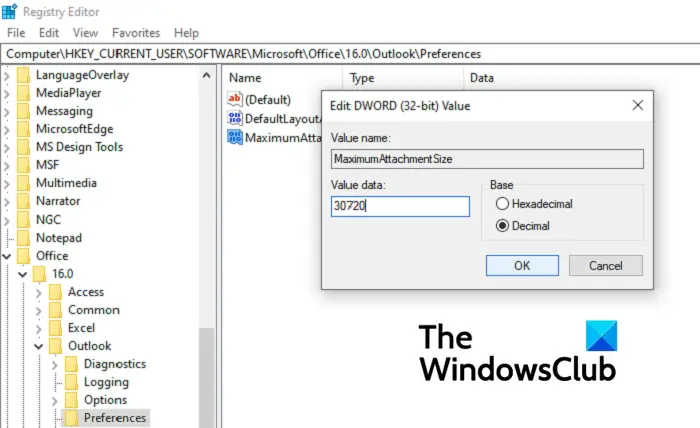While using Outlook, users get a 20MB cap on the file size of their attachment, i.e., a user can only mail file(s) as big as 20MB in one email. This size limit has been seen even with the latest Outlook versions.
The attachment size exceeds the allowable limit
Every time you try and attach a file that exceeds that limit, Outlook reports an error saying, “The attachment size exceeds the allowable limit.” This can be a bit annoying for those who are required to send files of relatively big sizes frequently. Lucky for those, there is a way to play around with it. In this article, we will demonstrate how you can exceed that maximum file size limit in Outlook.
Sometimes, when trying to upload a file bigger than the maximum limit on Outlook, a dialog box pops up advising you to upload the file in a shared location and share its link, like Google Drive. While that is a feasible solution, it isn’t the quickest one and can be riddled with interruptions.
How to increase the attachment size limit in Outlook?
The process is very simple and should take just a couple of minutes. We will be making the said change using the Windows Registry Editor. As always, you’re advised to back up your current Registry configurations since making a mistake in the process can cause irreversible damage to your system. Let us begin:
Open the Run dialog box and in the blank space type ‘Regedit.exe’

Then, based on the version of Outlook you have running on your PC, navigate to the relevant key. For Outlook 2019 and Office 365 it is:
HKEY_CURRENT_USER\Software\Microsoft\Office\16.0\Outlook\Preferences
Once you’re there, right-click in the blank area and create a new key (32-bit DWORD Value) by the name of MaximumAttachmentSize.
It’s possible that a key by that name already exists on this page, in which case you can move on to the next step
Now, right-click on this key and select Modify
Change the value data to adjust the maximum attachment size you want for your files on Outlook. Keep the base to decimal and provide a number based on Kilobytes. 1MB=1024KB, so make the calculations accordingly.
Here, I’ve changed the maximum file size to be 30MB. If you want to completely disable the limit, simply keep the value data equal to 0.
It is also possible for you to make the above changes to your Registry without actually using the Registry Editor. Using the Command Prompt, you can run the script below and make the desired changes.
For example, if you’re using Outlook from Office 365 and you want to increase the file size to 40MB, run the following command line.
reg add HKEY_CURRENT_USER\Software\Microsoft\Office\16.0\Outlook\Preferences\ /v "MaximumAttachmentSize" /t REG_DWORD /d 40960 /f
reg add HKEY_CURRENT_USER\Software\Microsoft\Office\16.0\Outlook\Profiles\Outlook\Preferences\ /v "MaximumAttachmentSize" /t REG_DWORD /d 40960 /f
The aforementioned command will create the desirable registry key and set its bit value accordingly. Now, restart your PC and try uploading a file in Outlook smaller than the new threshold you’ve set.
This can work only if the receiver’s email provider also allows attachments of these sizes; else while the email might leave you, the recipient’s email provider may reject it and the email will bounce back.
Related: Cannot attach files to email in Outlook.com or Desktop app.
How do I compress a file to email it?
Another way to look at the problem of files being too big for a mail is to be able to compress them. This, too, is quite an elementary thing to do. As long as the receiver of the file has a tool to decompress your file, the purpose is pretty much resolved. Here’s what you have to do:
- Open File Explorer and select the file or files you want to compress
- Once selected, right-click on them, and from the list of options, hover your mouse over ‘Send to’
- From the resultant drop-down, select Compressed (Zipped) Folder
Hope this article was of help to you!
Leave a Reply